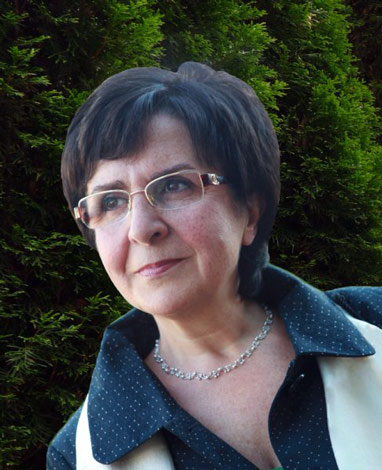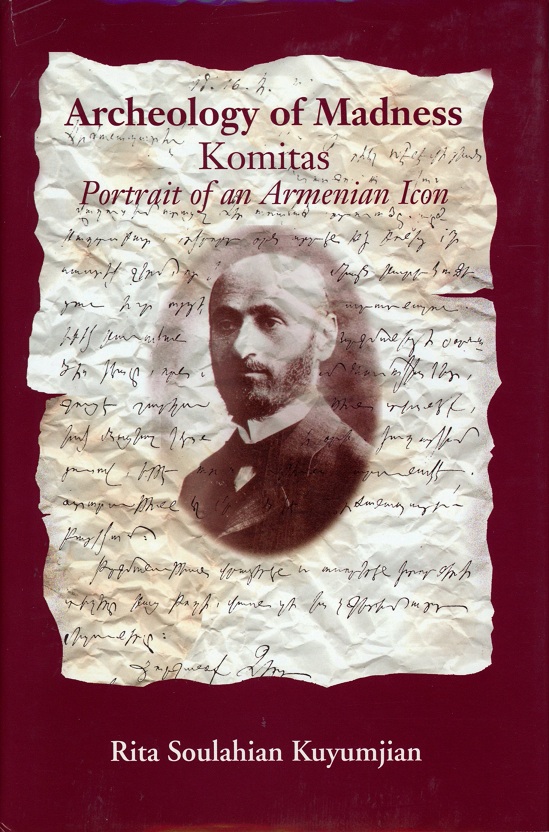Two great strands of human life are interwoven in the Armenian psyche: suffering and art. Komitas's life combines the two to create a tragic yet delightful tapestry of an artist's life.
Born in Kiitahya, Turkey, in 1869, Komitas rose from orphan street urchin to prominence as a an internationally recognized musicologist. He popularized Armenian classical music by organizing mixed choirs in many cities with large Armenian populations. Komitas was idolized by the members of the choirs, who came to see him as the savior of their musical heritage.
His quest was to rediscover the pre-Christian roots of Armenian ecclesiastical music, to bring high standards to performances of Armenian folk music, and to build a conservatory of music to promote musical education. His melancholic songs exert a profound healing effect on listeners and draw audiences, Armenian and non-Armenian alike, to their feet.
Komitas, the founder of Armenian classical music, became a symbol of the Armenian suffering of the 1915 genocide in Turkey. He was elevated in the eyes of Armenians to martyrdom.
AcknowledgmentsThis book represents several years of labor in a variety of fields. The work was carried out with the advice and assistance of a great many people, to whom I wish to express my gratitude.
Dr. Paul Ginestet of the Villejuif Asylum in Paris graciously allowed me to consult the hospital's archives and to make copies of Komitas's medical file. The research I completed with Dr. Ginestet's kind permission formed one of the cornerstones of this work.
La societe d'etudes et de recherches historiques en psychiatric (SERHEP) responded quickly and comprehensively to my inquiries by sending me a collection of documents from the file kept on Komitas during his years at the Ville-fivrard asylum near Paris, as well as much useful information about the asylum itself.
Phillipe Guillouard of the Interior Ministry of France helped me with the translation of the various legal and medical documents in Komitas's file. In so doing he provided me with crucial elucidation of France's Code de la Sante Publique and the laws governing the practice of psychiatry in France in the early part of this century.
Mrs. Knarig Grigorian and Henrik Pakhchinyan of the Charents Museum of Literature and Art in Yerevan offered invaluable assistance in compiling a file of letters, manuscripts, photographs, and other biographical materials. Artsvi Pakhchinyan, Gourgen Gasbaryan, and Marine Mousheghyan of the Museum of Literature and Arts made it possible to scan original pictures from the Komitas archives in Yerevan.
A large and varied group of people helped me to locate sources and references the world over. Among them were Raymond Kevorkian of the Nubarian Library in Paris; Father Vahan of the Mkhitarist Congregation in Vienna; Father Vartan Demirjian of the Antilias book depository; Mrs. Zvart Tanielian of the Haygazian College in Beirut; and the librarians of St. Mary's Hospital in Montreal.
Dr. Robert Bull of Montreal and Aris Sevag of New York generously offered their advice and comments on the early versions of the manuscript.
Ms. Hasmik Injejikian, a Montreal musicologist, guided me patiently through the history of Armenian music.
Professor Vahakn Dadrian, author of The History of the Armenian Genocide, gave me excellent advice in finding source materials on the Genocide in both Armenian and non-Armenian literature.
Nourhan Ouzounian of Montreal offered his enthusiastic assistance in translating certain official documents from Turkish into Armenian, as well as translating the Armenian poetry of Baruyr Sevag into English. He also helped with the editing of an earlier version of the manuscript.
Constructive criticism of the initial manuscript, as well as valuable advice on how to direct the work to a wider audience, was given by Mr. Manoog Young of the National Association of Armenian Studies and Research in Belmont, Massachusetts, Edward Alexandre of Bethesda, Maryland and Dr. Elizabeth A. Gregory of Boston.
Professor James Russell kindly offered editorial comments on the first version of the manuscript. The anonymous readers of the Gomidas Institute provided useful comments, for which I am grateful.
Dr. George Pollock of Chicago provided me with steadfast support and encouragement regarding the worthiness of this project.
My assistant Brian Lynch helped me enormously with the finer points of English syntax, and worked closely with me to restructure the book so that it would appeal to audiences both within and outside the psychiatric profession. I am likewise grateful to Ms. Sara Blackburn for carefully editing the text.
Members of McGill University student book club Marina Todorova, Antonio Sorge, Dolfen Addeh, Arman Kuyumjian, Annette Reed, and Carolina Mingarelli read the manuscript and offered their useful observations.
This book could not have been produced without the unwavering support and patience of the many colleagues and friends who listened carefully to the various working hypotheses that I developed over the ten years of work on this project. I would especially like to thank Anoush Agnerian, Hourig Attarian, Viken Attarian, and Hagop Khacikian.
Of course, I owe my greatest debt of gratitude to my husband Dr. Jirair Kuyumjian, and to my son Arman, whose encouragement and faith never flagged during the many periods of exhaustion and despair that I experienced in producing this work and bringing it to publication.
Finally, I would like to thank Mrs. Louise Simone for her abiding interest in this project and for her steadfast support, and the Armenian General Benevolent Union for a generous grant that made this publication possible.


